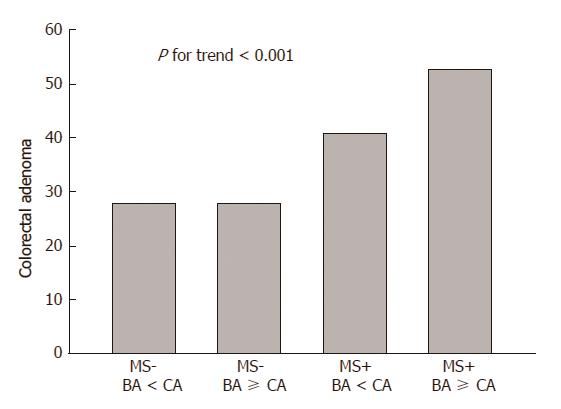Copyright
©The Author(s) 2017.
World J Gastroenterol. Oct 7, 2017; 23(37): 6877-6883
Published online Oct 7, 2017. doi: 10.3748/wjg.v23.i37.6877
Published online Oct 7, 2017. doi: 10.3748/wjg.v23.i37.6877
Figure 1 Prevalence of colorectal adenoma according to chronological age and biological age.
When the subjects were divided into four groups (≤39 yr; 40-49 yr; 50-59 yr; ≥ 60 yr), the prevalence of colorectal adenoma increased with increasing biological age (P < 0.001).
Figure 2 The prevalence of colorectal adenoma according to metabolic syndrome and age gap.
The incidence of colorectal adenoma increased for the first group (MS- and BA < CA), the second group (MS- and BA ≥ CA), the third group (MS+ and BA ≥ CA), and the fourth group (MS+ and BA < CA) (P < 0.05). MS: Metabolic syndrome; BA: Biological age; CA: Chronological age.
- Citation: Kim SJ, Kim BJ, Kang H. Measurement of biological age may help to assess the risk of colorectal adenoma in screening colonoscopy. World J Gastroenterol 2017; 23(37): 6877-6883
- URL: https://www.wjgnet.com/1007-9327/full/v23/i37/6877.htm
- DOI: https://dx.doi.org/10.3748/wjg.v23.i37.6877










